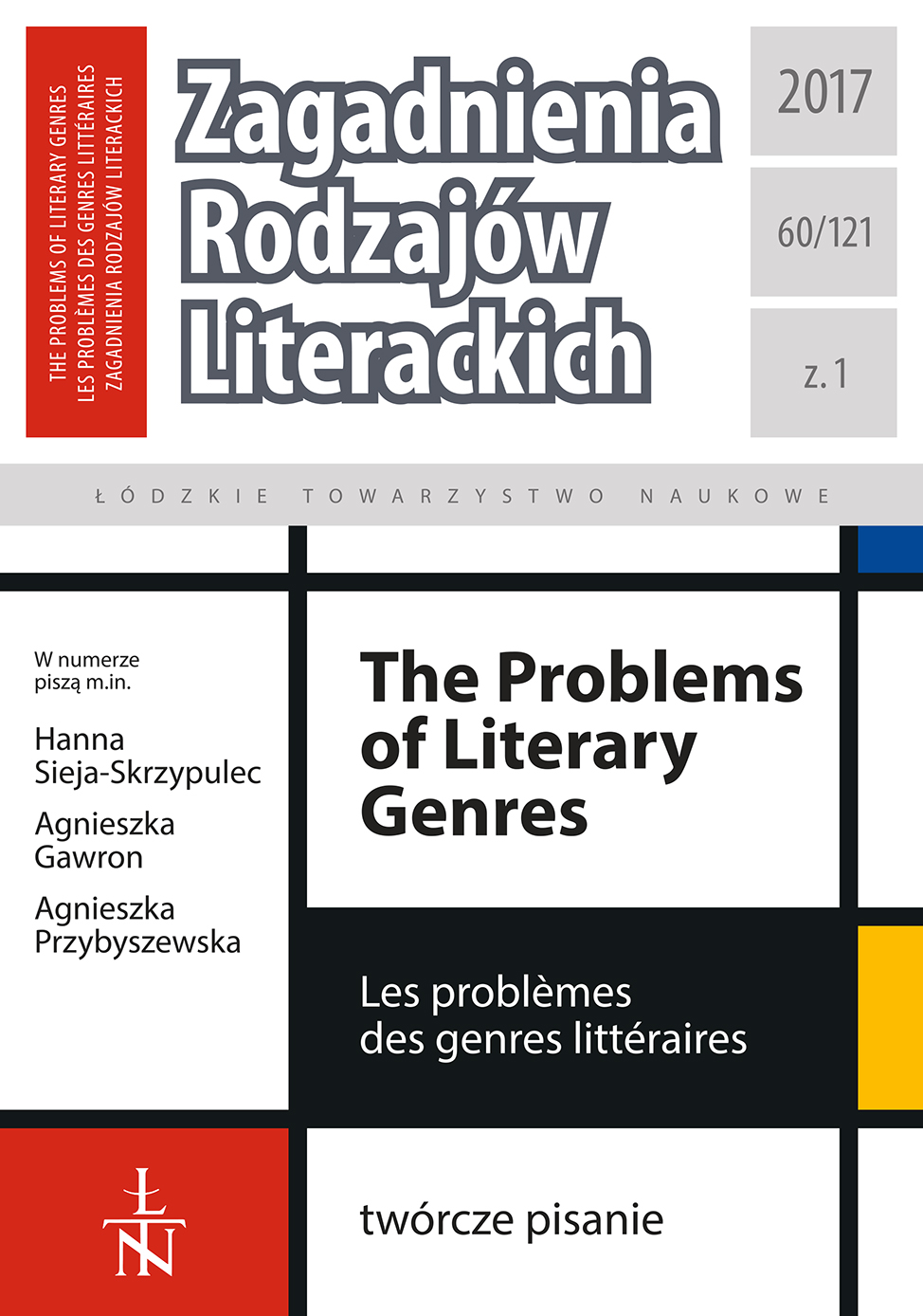Close reading / reading closely a twórcze pisanie. O przepisywaniu literatury w programie nauczania twórczego pisania
Close Reading / Reading Closely and Creative Writing. Re-writing of Literature in the Course of Study Creative Writing
Author(s): Natalia LemannSubject(s): Studies of Literature
Published by: Łódzkie Towarzystwo Naukowe
Keywords: re-writing literature; close reading; creative writing; the anxiety of influence; apocrypha
Summary/Abstract: This paper is concerned with the methodological, practical and analytical dimension of creative writing training. Lectures and seminars for first year students „Literary masterpieces of XX–XXI Century”, have been dedicated to the education of close reading skills, which is an introduction to the skills of creative writing, understood as rewriting, or re-formulation of canonical literary texts. Creative writing students have been instructed how to find their own voice on the margins of famous texts. This approach for creative writing education is presented by Nicholas Delbanco, author of The Sincerest Form. Writing Fiction by Imitation. Close reading and creative re-writing of canonical literary works is a significant exercise of stylization, pastiche, narrative modes, point-of-view technique, focalization and world and character building processes. Exercises like these are not only creative writing training but also a workout of critical thinking, based on influential paradigms like post-colonialism, feminism, cultural studies, due to the subversive potential of re-written literature. This is an interesting challenge for both sides of the education process: for students and for academic teachers. This paper is a review of analytical procedures, practical exercises, questions and issues which were given to students during a course on „Literary masterpieces of XX–XXI Century” (dedicated to Lord Jim by J. Conrad, The Death in Venice by T. Mann; The Stranger by A. Camus) and an opportunity to present students’ short stories and exam task fragments.
Journal: Zagadnienia Rodzajów Literackich
- Issue Year: 60/2017
- Issue No: 1
- Page Range: 57-75
- Page Count: 19
- Language: Polish

